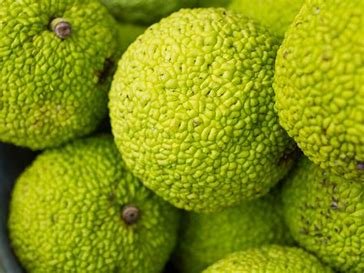Alternatives to a Privet Hedge
Robin Schachat
Let’s begin by assuming that you have not planted a solitary specimen of privet in your garden. If you have, the solution is simple. Make one strong cut across the stem or stems just above soil level, and follow by digging out the remaining roots. If you need a lovely specimen to fill in its place, the world is full of beautiful native shrunbs; pick one you love, and plant it in the privet’s place.
This method also works well for privet plants that have popped up in your garden without being intentionally planted. Just Remove Them.
Most Americans who have chosen to plant privet, however, or who have inherited privet in newly purchased home landscapes, are the proud owners of a privet hedge. It is asking a lot of a homeowner to remove an entire established hedge, but we urge you to read the facts about this plant, propagation of which is already outlawed in many states and will be in 2026 in Ohio as well. This plant is exceptionally detrimental to our ecosystem. If you cannot bring yourself to delete the entire hedge at once, we urge you to take out a third of it each of the next three years, replacing it with an attractive alternative each year as you go along.
In last month’s articles we suggested the use of a mixed hedge, which is healthiest for the food and nesting of our native birds and pollinators. Suggestions van be found in last month’s Newsletter. But if you want a single-species hedge, here are a few excellent alternative options.
NATIVE PLANTS
Viburnum hedges do not require quarterly pruning, as privet hedges do. Just let the viburnums grow in their natural shapes. They will, like privet, be deciduous, floriferous, and prolifically berry-producing for migratory birds. Locally, one of our best options in a sunnier location is Viburnum dentatum, commonly known as arrowwood. In a shady location, consider Virburnum acerifolium, the maple-leaf viburnum, which has the added advantage of brilliant red foliage in the fall.
Viburnum dentatum
Viburnum acerifolium
Aronia arbutifolia, chokeberry, also will give great fall color before leaf drop in addition to its early summer bloom and fall red berries. Its close cousin, Aronia melanocarpa, is less flashy in fall but, like privet, fruits with black berries, if for some reason you prefer that look.
Aronia arbutifolia
Aronia melanocarpa
Ilex glabra
Another black-berrying native shrub is the less showy inkberry, Ilex glabra. Inkberry is shorter and less bushy then privet, but it not only native but also evergreen!
Arborvitae occidentalis
Also a native evergreen, Arborvitae occidentalis is an easily pruned and trained, soft-textured shrub that if left to its own devices will grow into a considerable tree. There are innumerable cultivars of this plant, from which you may select color and size variations. But if you have a deer problem, this is not the hedge plant for you. It smells like sweet apples to us, but it tastes even better than that to deer. They will prune off all of the lower greenery they can reach.
Cornus sericea
For wet soil locations, consider using red osier dogwood, Cornus sericea. While not an evergreen, this relatively short but very thickly branching beauty provides a true WOW! moment in the winter, when its naked stems shine lacquer red in the low winter sunlight.
Maclura pomifera
If you want a taller alternative, one of the classic American small hedge trees is Maclura pomifera, the Osage orange. Its native range extends only to southern Ohio, but it is quite hardy here and is a very effective privacy hedge, armed with a multiplicity of savage thorns. If you prune this plant just once or twice, it will grown many, many shoots from the soil level and create an almost impassable hedge – this is a terrific hedge to keep the deer out! And who among us has not played ball with the green, bumpy fruits of Osage orange in the fall?
NON-NATIVE PLANTS
For those who must have an extremely neatly trimmed hedge, privet is never the answer in North America. If you absolutely require a long, uniform run of rectangles, please consider one of the NON-invasive non-native options. Boxwood is lovely, although it is somewhat disease-prone. Yew can be trained to any form you like, and has the added advantage of being soft and pliable for making holiday wreaths and arrangements.
But we suggest once again, there are so many beautiful native shrubs from which to choose. Think about oak leaf hydrangea, or one of the many colored ninebark cultivars, or bayberry, or American beautyberry, or winterberry, or lovely pink steeplebush or dwarf white pine or fragrant sumac or silky dogwood or bladdernut or spicebush or rhododendrons or highbush blueberries or eastern red cedar or hackberry or wild plum or Washington thorn or even our native prairie rose…the list goes on and on.
Just, please, do not keep growing privet.







